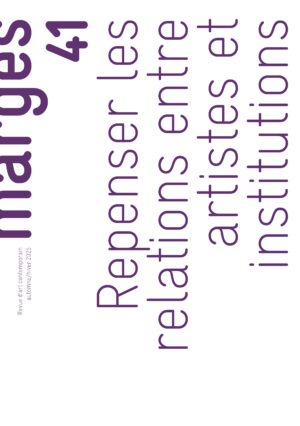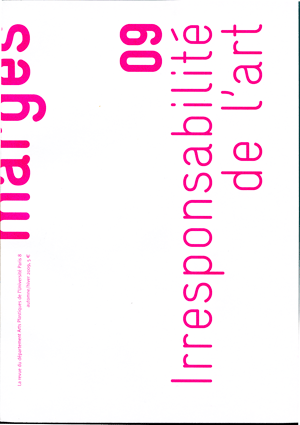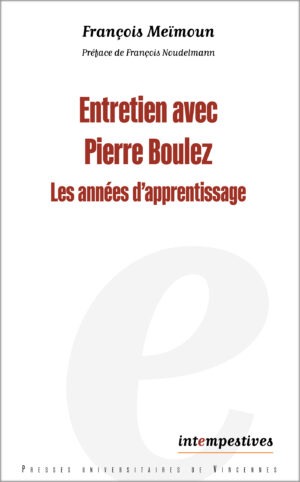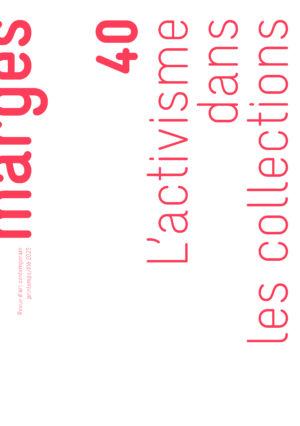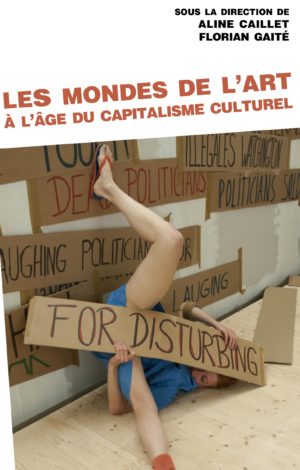Valérie MORISSON
Deconstructing the Political Discourse of the Image: Irish Post-Nationalist Art
Times of political disturbances are likely of radically transforming the status artists who are led to question the political value of their work. The Irish artistic scene, confronted with cultural nationalism and the 1970’s-1990’s Troubles, forms a favourable field for studies of the artist’s responsibility. A number of Irish artists who were for a long time crushed between an involvement using traditional figuration and international formalism, choose now to set aside the question of political stance, in order to build a “postnationalist” art; an art able to re-evaluate the link between image and political and nationalist discourse.
Aline CAILLET
In Praise of an Artistic Responsibility
In order to understand what is encompassed by the idea of an involved art or political art, one has to go through a critical examination of modernity and of what is at stake with the appearance of contemporary art. The vitality of a critical function of contemporary art concerns no longer the artworks’ content but their relational axis: an “addressing” that Sartre once defined as an equality truce between the artist and the one who receives. Artistic responsibility (or ethic) is esthetic: it consists in the construction of an equalitarian position for the spectator within the artwork.
Sébastien BISET
De-politicisation of Art and Practices of Gaining Responsibility: When Artistic De-involvement Calls for Usage Tactics
Some recent artistic practices have displaced modernist utopia –“how do we build everything anew?”– towards micro-utopias of proximity: “how does one live differently in these places?”. It is about indirect political consequences of artworks whose use leads to individual and social goals: improving real and everyday experience. In an era of cultural industry, the artists’ involvement implies taking a stance against this cultural landscape. As a “specialised” post-production worker of the “all encompassing cultural world”, the artist doesn’t seek so much to waken alienated consciousnesses as to propose devices “that could bifurcate subjectivity”.
Céline CADAUREILLE
Irresponsibility. In Praise of a Transgressive Liberty
Within such idiot, fool, or “enfants terribles” figures, like those of Maurizio Cattelan, the Chapman brothers, or David Nebreda, the artist seems sometimes to be irresponsible. Do these transgressive postures, sometimes abject or morbid, have to be related to forms of innocent irresponsibility or are they eventually a new way of questioning the world’s obscenity?
Armelle FOURLON et Boris KHALVADJIAN
Art, Liberty, Responsibility. A Juridical Point on a Case of Concessions
Art is a unique area of liberty, allowing the artist at times the ability to push the limits of “juridical correctness”. In some border cases, the dilemma consists, for the legal system, to state the Law, while taking into account the liberty of creation. Here, some recent “emblematic cases” – such as pictures by Kevin Carter or Gary Gross, a novel by Philippe Besson inspired by the Gregory Affair, some suspected plagiarism, image transformations or sequels of notorious contemporary novels– are discussed inasmuch they have been putting pressure on the Law.
Pierre TAMINIAUX
In Praise of a New Art Community
Contemporary artist’s political responsibility involves necessarily a new politics of formal radicalism; art’s politics having to be conceived on the basis of its aesthetic dimension. The definition of the political responsibility of the artist should as well include a reflection upon the very notion of community in art. The contemporary artist cannot find back the lost political sense of art, else than by the integration of his practice in a community both existential and aesthetic; a community likely to contradict art’s economic determination through market laws, taking up again with the lesson of the avant-gardes.
Sylvie SERVOISE-VICHERAT
The Writer’s Responsibility in the Present and “Presentist” Involvement
“(Politically) involved literature” has been the name given all along twentieth century to a certain way of exercising responsibility on the part of the writer. How can texts written at the end of last century renew a paradigm of literary involvement conceived in 1945 and long gone? Or, to put it differently, what are the possibilities and ways the literary might intervene and act within the field of human history in a context that has been modified? Basing his analysis on three novels (by Olivier Rolin and Antoine Volodine) – posed as narrations from after the fact– the author suggests seeing them as an expression of unseen forms of involvement, matching a reconception of time and History, such as the ones of historians François Hartog and Pierre Nora.
Kalliopi PAPADOPULOS
A Learned Interior Necessity
A common saying has it that an “involved” artistic practice is no longer imaginable in a time where the artist is constrained by material problems and dependent on the market and institutions. One forgets however the specific conditions, family ones notably, that lead to the emergence of a creative act. This “learned necessity” –a habitus generated inside the family circle– can also be understood as a specific involvement form.
Sophie LE COQ
To Invest Oneself in Artistic Trajectories: the Expression of Differentiated Involvements
While referring to the emergence of associations-related artistic practices, the author questions the driving force behind the involvement in such activities. A few examples lead to a hypothesis according to which investment in these practices cannot anymore solely be understood through a vocational register, but as ways of testing oneself according to the axis of putting things in common and mastering oneself. If a hope for social recognition is attractive, it is because the image of the artist appears to be an “ethical social figure”.
